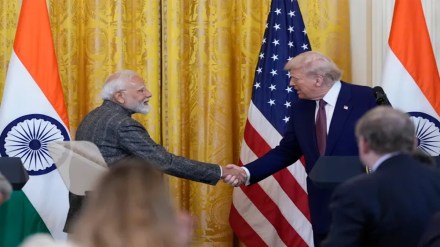Prime Minister Narendra Modi is the fourth leader to visit the US following President Donald Trump’s inauguration, which is reflective of the importance of the India-US partnership and strong bipartisan support for this relationship. While Modi has developed a strong personal chemistry with Trump — as he also had with former President Joseph Biden — having visited the US in 2017 and 2019 in the latter’s first term, he would have discovered that he is dealing with a different leader who is moving the US into a highly disruptive and unpredictable territory. Barely hours before their one-on-one meeting in the White House, Trump ordered his administration to prepare reciprocal tariffs on numerous trading partners headed by India to rebalance trade relations in the direction of greater fairness. He considers India as “tariff king” and an “abuser of imports” that levies average applied most favoured nation tariffs on agricultural goods of 39% as against the US’ 5%, and 70% tariffs on US motorcycles while America charges 2.4%. This lack of reciprocity is considered unfair and responsible for India’s trade surplus with the US.
Trump’s tariff bluster no doubt cast a shadow over Modi’s visit. The transactional US President emphasised the importance of India increasing its procurement of American-made security equipment and energy supplies of oil and gas to reduce its persistent trade surplus with the US. The pragmatic deal-making on India’s part in this regard is reflected in the joint statement. Both leaders launched a new initiative, US-India COMPACT (Catalysing Opportunities for Military Partnership, Accelerated Commerce and Technology), to drive transformative change across key pillars of cooperation. The US is already one of the leading suppliers of defence equipment like helicopters, transport and maritime patrol aircraft, and other military hardware. Both leaders announced plans to sign a new 10-year framework for the US-India defence partnership. Both leaders also announced the start of US-India TRUST (Transforming the Relationship Utilising Strategic Technology) to catalyse collaboration in various critical and emerging technologies like artificial intelligence, quantum computing, semiconductors, telecom, and space.
To reflect the aspiration of COMPACT, both India and the US resolved to deepen the bilateral trade relationship in the direction of greater fairness. The US is now India’s largest trading partner but more needs to be done to remove impediments for a new phase of trade cooperation to double bilateral trade to $500 billion by 2030. A mutually beneficial, multi-sector bilateral trade agreement is to be negotiated by autumn this year. It bears mention that such a deal was also attempted in Trump 1.0 but did not make progress. Trump 2.0, however, is different as the US President is hastening moves in this direction with reciprocal tariffs for greater fairness. This entails the US raising its tariffs to match India’s or India lowering its levies to that of the US. Although the Union Budget for 2025-26 pre-emptively announced the reduction in import duties for electronics, textiles, and high-end motorcycles, India’s higher relative tariff rates face the risk of reciprocal tariffs. The risks are made much lower by inking a bilateral trade agreement.
Although navigating the unpredictable Trump 2.0 has its own challenges — like dealing with the deportation of illegal Indian immigrants — US-India ties will continue to broaden and deepen. This process is also coterminous with the growing profile of the 5.4 million-strong Indian diaspora in the US that strengthens the bond immeasurably.
